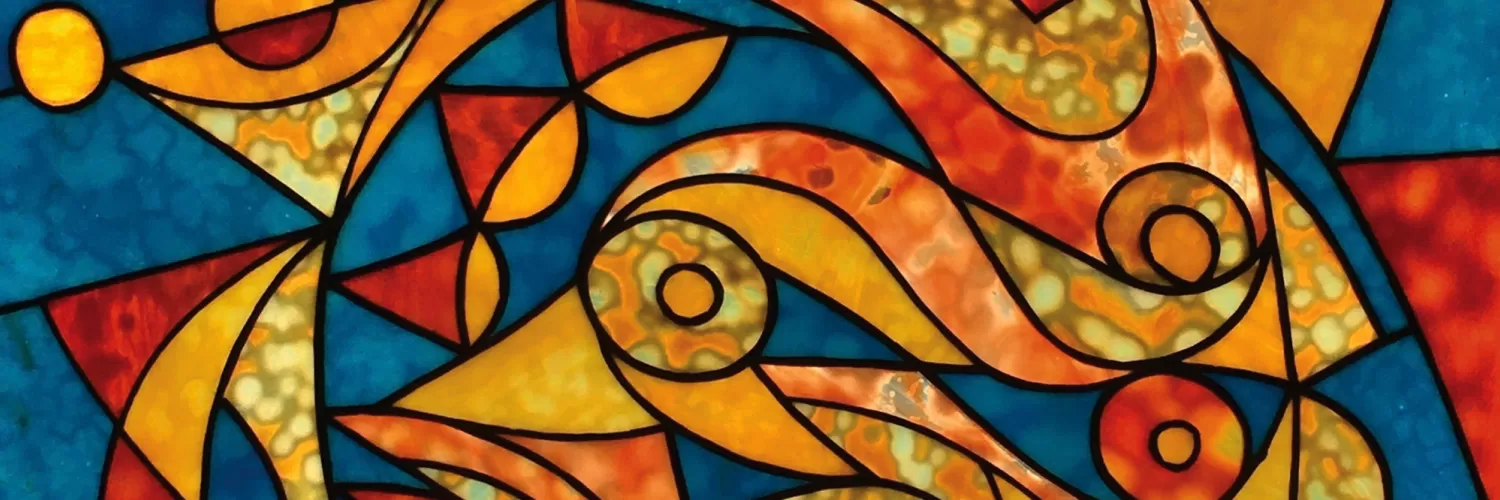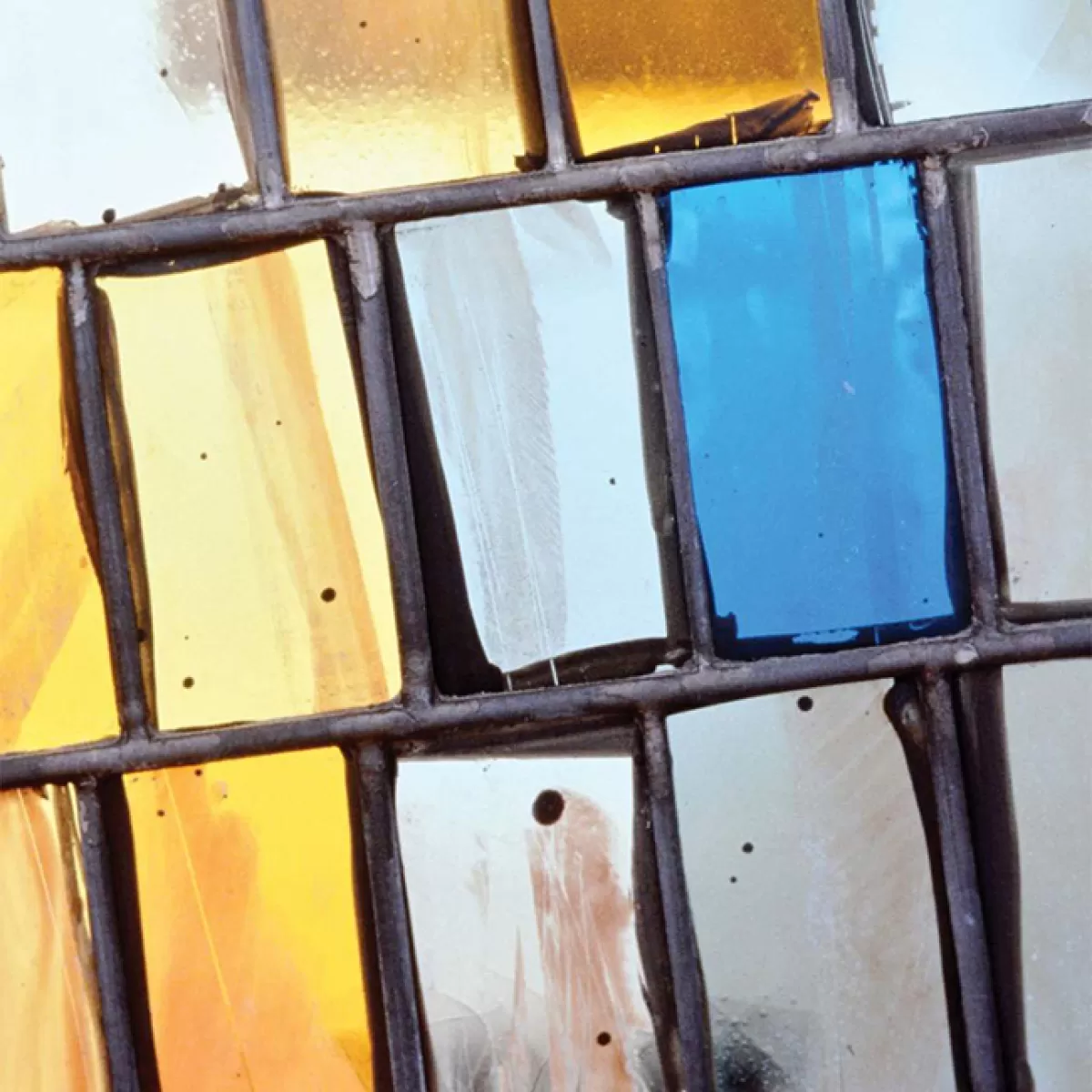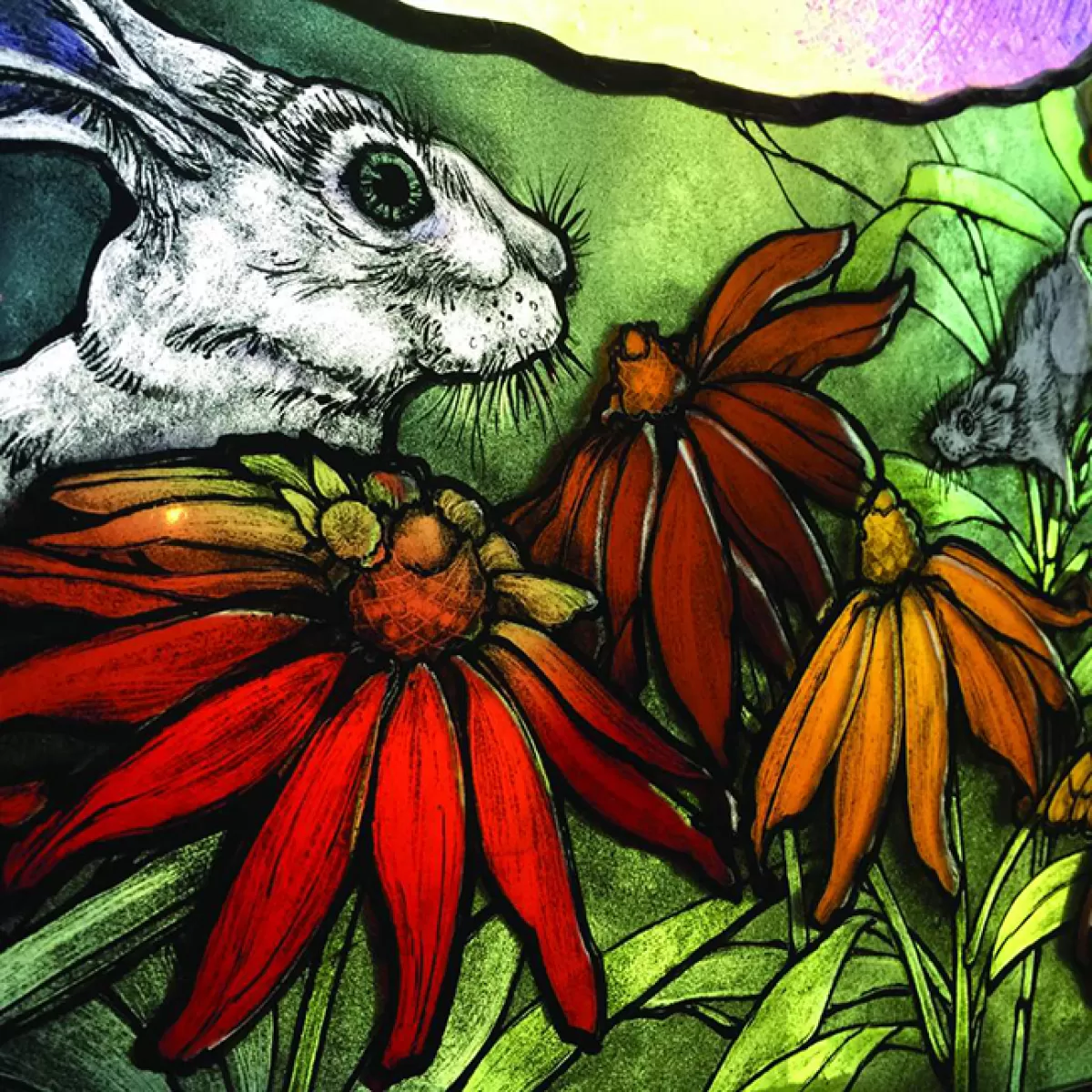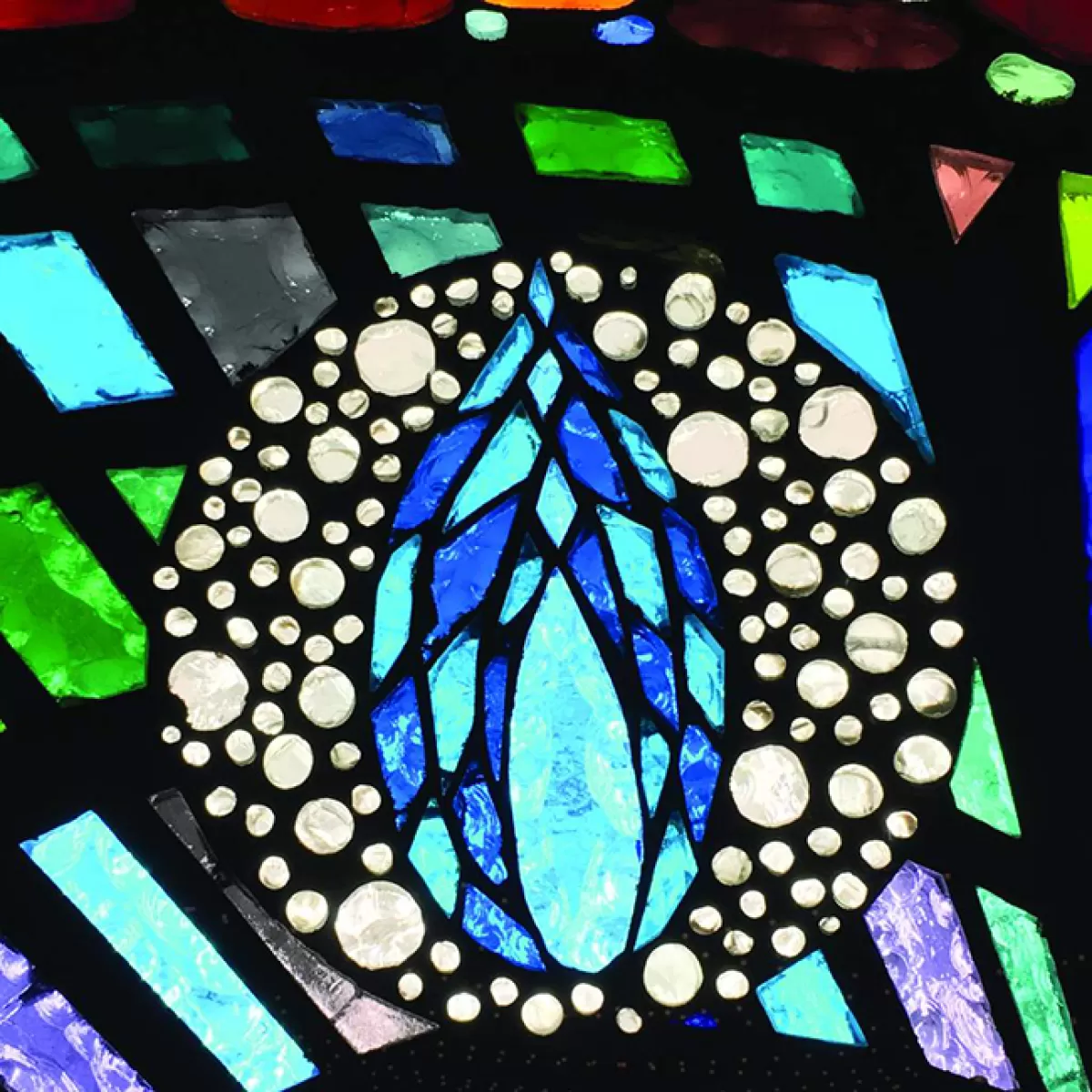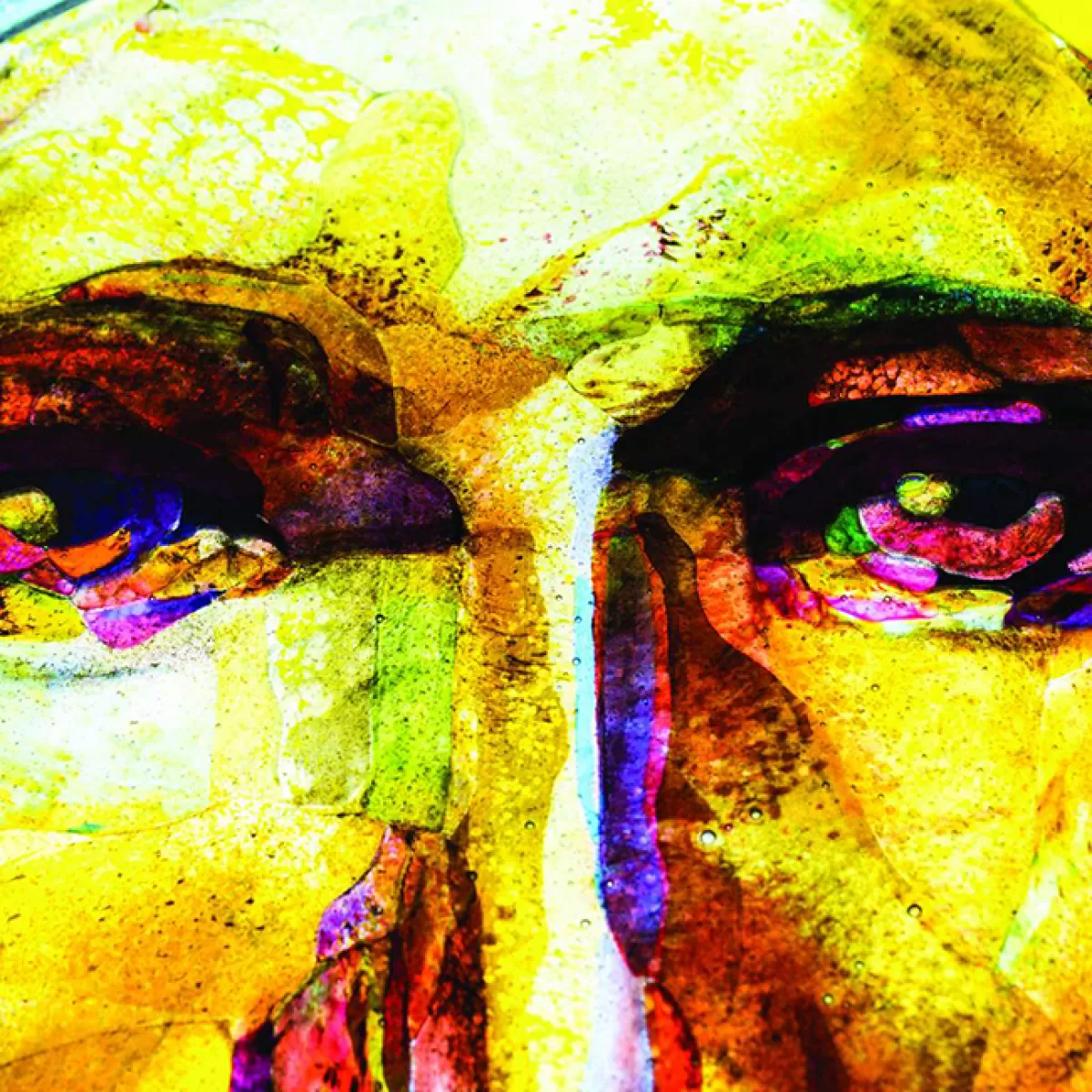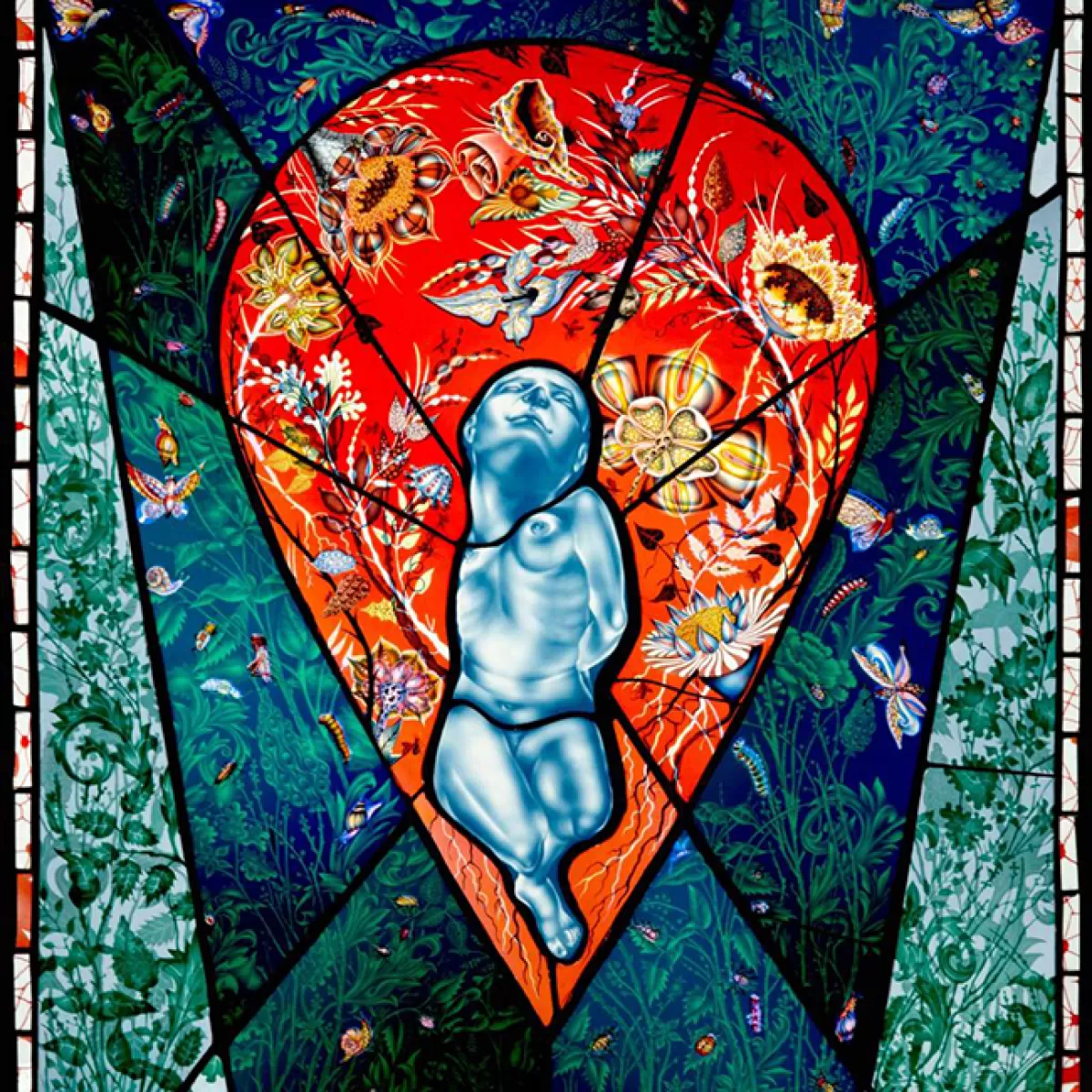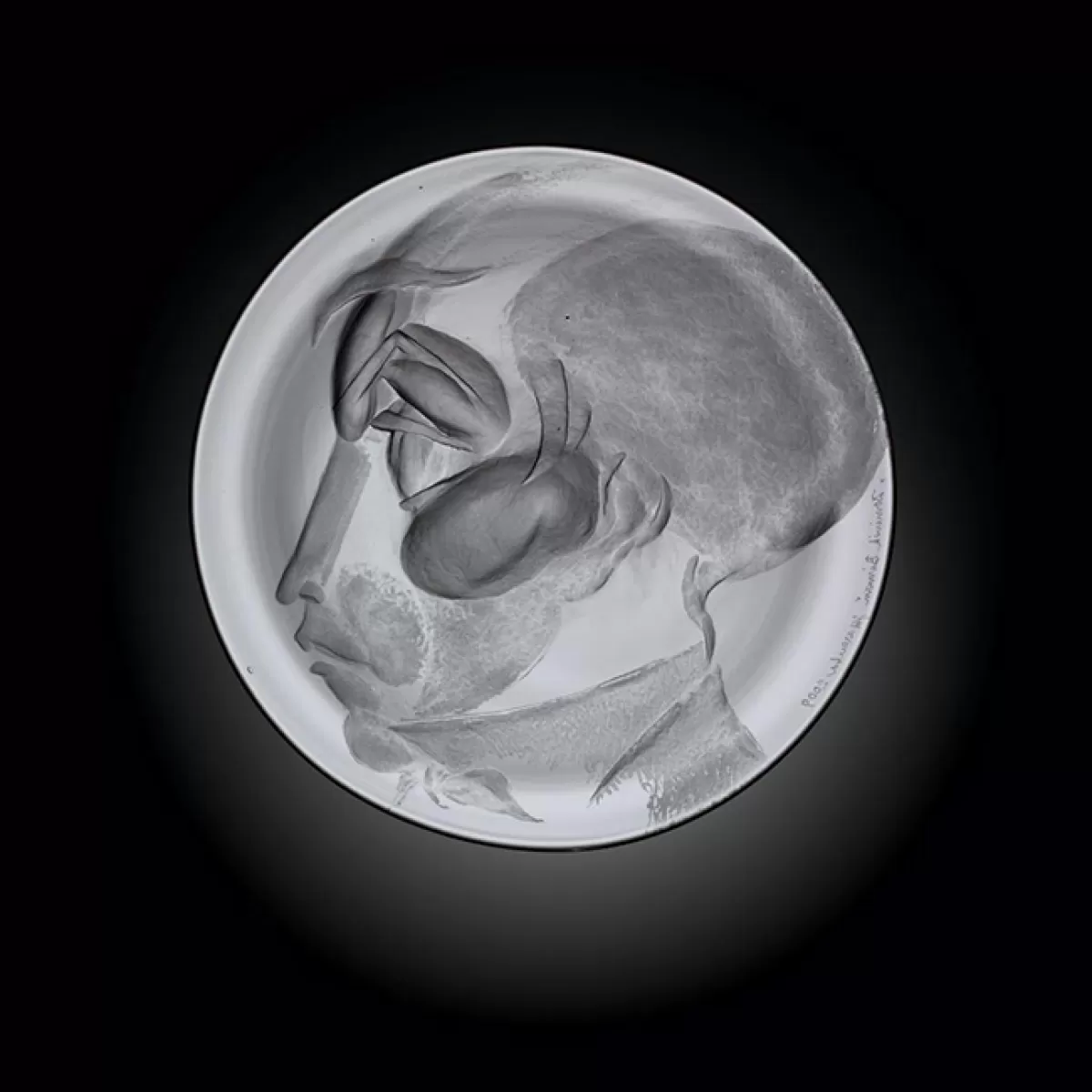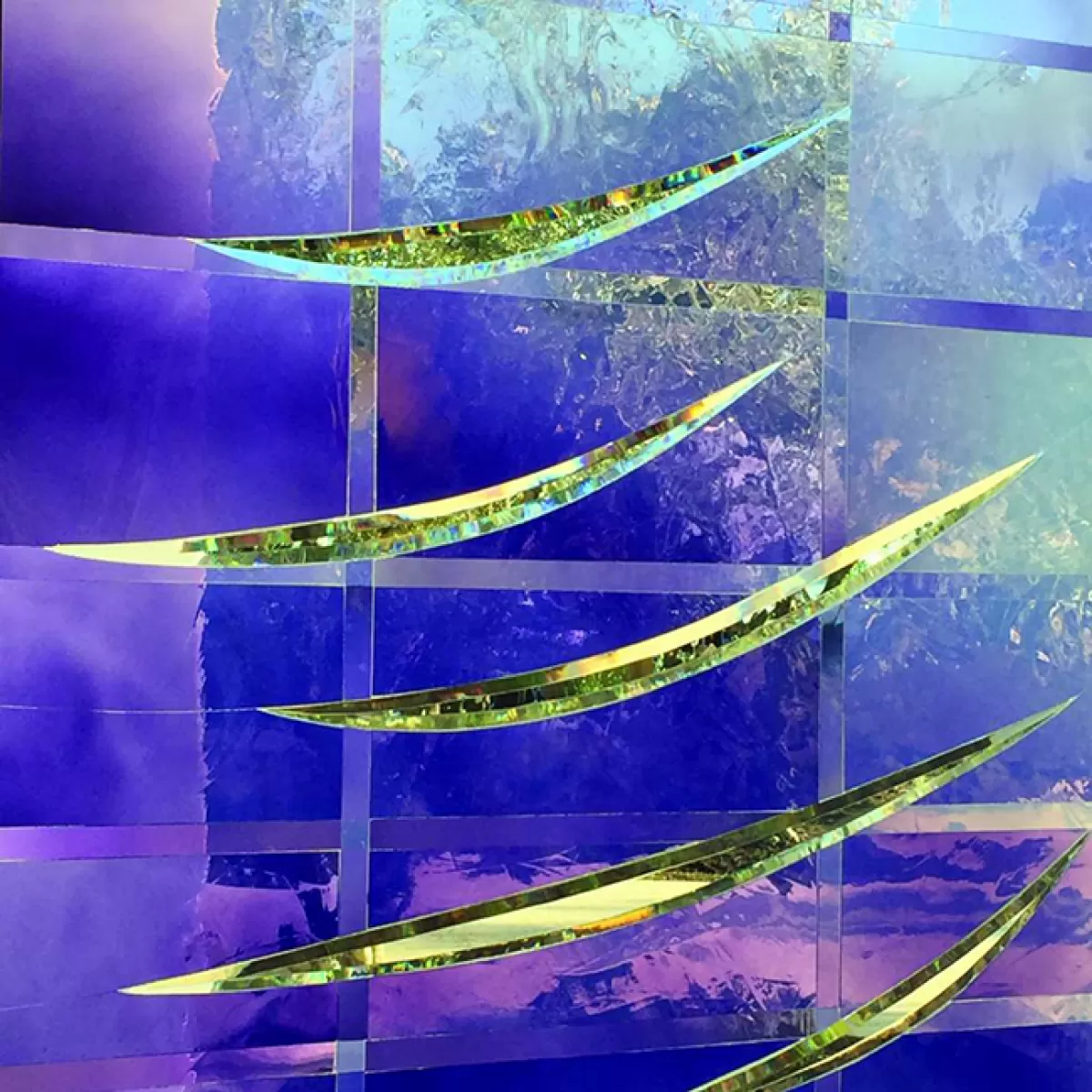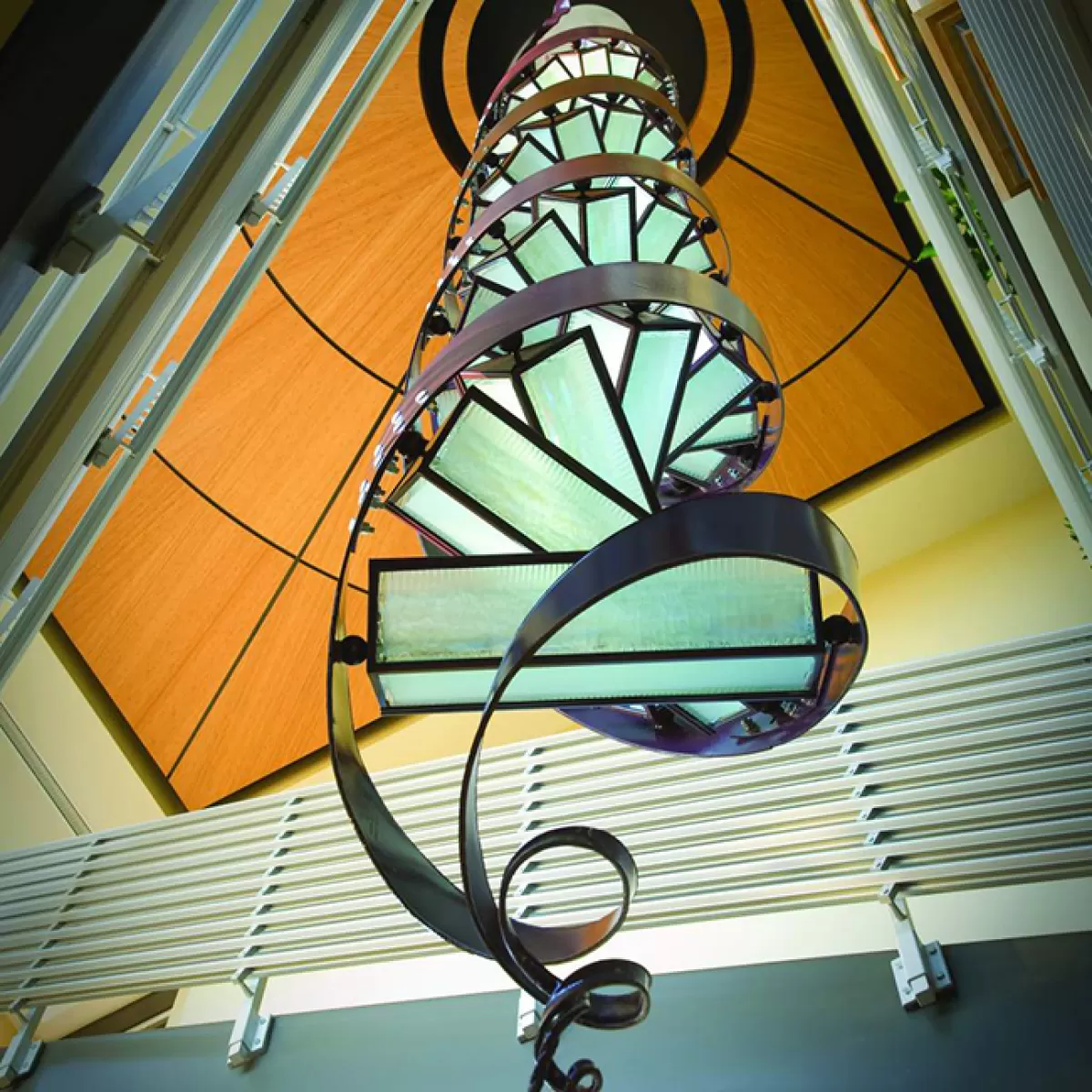Glass has many potentialities, contemporary studios are constantly developing and researching new design concepts in ornamental glass for use in architecture, sculpture and other artwork. These are all available to the architect and to the architect's client, and can be incorporated into a building if the architect will consult with a studio in the early planning stages.
Large stained glass studios can also be an excellent resource center for artists in other media who are looking to incorporate glass into their projects. Glass can be the ideal material to place in any environment and our Accredited Professional and Professional studios are happy to assist with the technical design and construction of public artworks or special installations with artists in their communities.
Leaded Glass
The durability of lead along with its flexibility when formed into grooved strings makes it a suitable material to bind fragments of glass into decorative panels. The use of lead is merely functional when framing separate pieces of color but the organization of the lines can become an important design element. Each designer arranges them in his own way for his stylistic purposes. They may be left as an unobtrusive geometrical pattern subordinated to color changes or featured in assertive and energetic linear rhythms.
Painted Glass
This term is misunderstood by some who suppose that the color in stained glass has somehow been painted on clear glass. All color is inherent in the glass and is due to its chemical content. Painting as it is mentioned here means the use of the only pigment used by the glass painter which is monochromatic and is made permanent by firing. It is used the help delineate design concepts. The density can be controlled to produce opaque lines or it can be modulated in texture to reduce halation and to temper light as desired.
Faceted Glass
Slabs of glass can be combined and bonded in epoxy to produce a wide gamut of effects ranging from the brilliant sparkle of chipped surfaces and translucency of untouched slabs to the opacity of the negative areas. It is most expressive when supported by a bold design. The slabs or dalles used are moulded to the approximate size of 8”x12”x1” and weigh about eight pounds. Epoxy resins have been developed which are very close in expansion and contraction with glass when exposed to our variable climates.
The number of faceted pieces in a given panel is a matter of taste. If overdone, it negated the very purpose of adding an accenting touch by reducing every piece to a common level of glitter. However, if a window is to be artificially illuminated a greater amount of chipping will add to its effectiveness by deflecting the light and making it appear to be held within the glass.
Fused/Kilnformed Glass
Fused glass, also known as warm glass or kiln-formed glass, is made when two or more pieces of glass, which are compatible, are heated in a kiln until they melt and fuse together into a single piece. Typically, fusing refers to any glass that has been worked in a kiln; the possibilities of texture, color, and thickness are vast. Painted glass and other techniques can be easily combined with fusing creating a technique commonly refered to as “painting with light.” Because of the demands of firing and annealing glass, glass kilns today typically operate under the direction of a computerized kiln controller.
Etched Glass
A type of glass known as flashed, combines two colors, one much thinner than the other. Portions of the thinner layer can be removed with hydrofluoric acid to produce a design of two colors on a single piece. Sandblasting will remove the colored skin with much the same effect as etching but causes a denser texture which contrasts with the transparency of the unbroken surface. In certain color combinations the sandblasted areas are clearly visible from the exterior with a pale tinted frosted effect against the dark background of the surrounding untreated glass.
Carved Glass
Under this heading are included other means of decorating glass such as etching, sandblasting, and polished wheel-cuts applied to clear or tinted plate glass. Sandblasting can produce a variety of textures contrasted against deeply cut areas and lines. Polished wheel-cut lines can be employed for lettering and other accents. When portions of a design are left clear, the exterior scene will be visible adding interest by day and night. Areas may be gilded to articulate portions of the designs. These will appear as silhouettes by day and give richness when seen under artificial light at night.
Portrait of Dominik Biemann (Czech, 1800–1857), 2009. Cast glass, engraved. Diam. 24.1 cm. Collection of The Corning Museum of Glass (2009.4.89).
Laminated Glass
Transparent adhesives have made it possible to affix glasses of many types and colors to plate glass. This technique makes it possible to create effects of apparent spontaneity different from those of the built-in discipline of leaded work. Color superimposed on color can be used to create harmonies of great subtlety.
Other Materials Combined with Glass
Colored glass versus clear is the limited alternative that is likely to come to the mind of one who is unaware of the potentialities of decorative glass. The incorporation of other materials can extend the effectiveness of glass in changing light, and when viewed from without and within. In response to special architectural and aesthetic needs such materials as painted masonite, enameled and plain sheet metals, gilded leaf overlays, mirrors, colored opaque glass, and even areas of mosaic have been found useful to augment the qualities of glass.
While novelty for its own sake is to be avoided, there are occasions when it is desirable to retain the visual mass of a building and prevent openings from appearing as voids. The worth of all materials is that given by the creativity of the artist using them.
